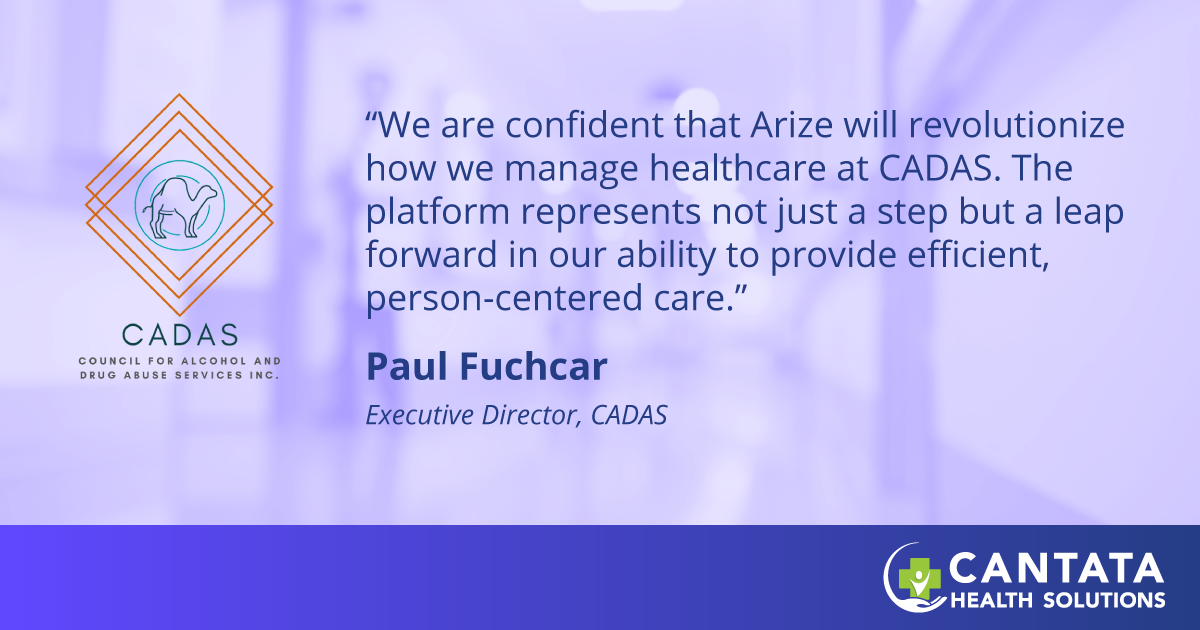Leading substance abuse treatment facility selects new technology to better prepare for the future.
The Council for Alcohol and Drug Abuse Services (CADAS) is pleased to announce that it has chosen the Arize care management platform from Cantata Health Solutions as its electronic health record (EHR), medication management, accounts receivables, and patient engagement solution.
Arize, known for its modern approach to bringing together clinicians and clients into a single care management platform, will optimize the services provided by CADAS. This move underscores Cantata’s commitment to improving care, increasing efficiency, and reducing costs for healthcare organizations.
Paul Fuchcar, Executive Director of CADAS, expressed his enthusiasm about the new partnership, “We are confident that Arize will revolutionize how we manage healthcare at CADAS. The platform represents not just a step but a leap forward in our ability to provide efficient, person-centered care. We also anticipate significant enhancements in our operational efficiency and outcomes. Arize, together with services from Cantata, will enable us to serve our clients better and fulfill our mission in the community.”
“We are excited to welcome CADAS to our fast-growing Arize user community. For a long time, agencies have had to rely on old, legacy technology that was cobbled together, but providers deserve better,” says Alan Tillinghast, CEO at Cantata Health Solutions. “Our care management platform brings together all of the solutions an agency needs into a single modern solution that is configurable and accessible by clinicians and clients alike through a single user-friendly interface. We are reducing the burden on providers by raising the role of technology in behavioral health.“
If your organization is ready to switch to the modern care management platform, contact us today to set up a personalized demo at CantataHealth.com/Lets-Talk
About The Council for Alcohol and Drug Abuse Services (CADAS)
CADAS has been providing superior treatment services for individuals grappling with substance abuse disorders since 1964. With a deep-seated commitment to delivering compassionate and comprehensive care, CADAS has been instrumental in transforming countless lives. Learn more at www.CADAS.org.
About Cantata Health Solutions
Built by behavioral health industry veterans, Cantata Health Solution’s all-in-one Arize care management platform provides a modern EHR, a complete billing and revenue cycle management solution, and an extensive array of client engagement tools. Arize offers clinicians, executives, back-office staff, and clients a collaborative view of the health record. In an industry dedicated to serving the most vulnerable population, our mission is to provide technology that empowers so providers don’t have to rely on legacy systems that only hinder their progress. Together, we enable those who make a difference to excel.
Visit CantataHealth.com to learn more about how agencies across all service areas from all over the country are making the switch to the care management platform that providers deserve.

